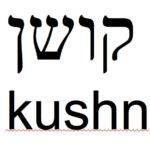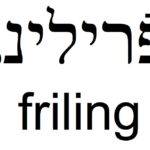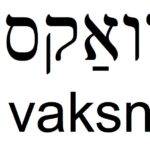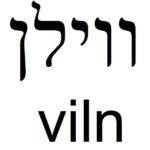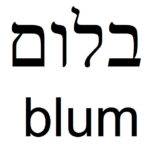DI MAME, VIL IKH KUSHN
IN FRILING, VAKSN BLUMEN
VILN = װילן = VOULOIR = TO WANT
KUSHN = קושן = EMBRASSER = TO KISS
DER FRILING = דער פֿרילינג = LE PRINTEMPS = SPRING
VAKSN = װאַקסן = POUSSER (végétal, animal) = TO GROW
DI BLUM(EN) = די בלום = LA FLEUR = THE FLOWER
Nous découvrons ici une règle très importante concernant l’ordre des mots dans la phrase yiddish.
Dans une phrase AFFIRMATIVE, le VERBE CONJUGUÉ doit IMPÉRATIVEMENT venir se placer en DEUXIÈME POSITION.
Il en résulte, que si l’on a choisit de commencer la phrase par un complément, le sujet viendra se placer derrière le verbe et non devant selon l’ordre naturel.
“Ikh vil kushn di mame” mais “di mame, vil ikh kushn” et non “di mame, ikh vil kushn”.
“Blumen vaksn in friling” mais “in friling, vaksn blumen” et non “in friling, blumen vaksn”.
Here we find a very important rule regarding the order of words in the Yiddish sentence.
In an AFFIRMATIVE sentence, the CONJUGATED VERB must IMPERATIVELY place itself in SECOND POSITION.
As a result, if one has chosen to start the sentence with a complement, the subject will be placed behind the verb and not before as in the natural order.
“Ikh vil kushn di mame” but “di mame, vile ikh kushn” and not “di mame, ikh vil kushn”.
“Blumen vaksn in friling” but “in friling, vaksn blumen” and not “in friling, blumen vaksn”.
:

